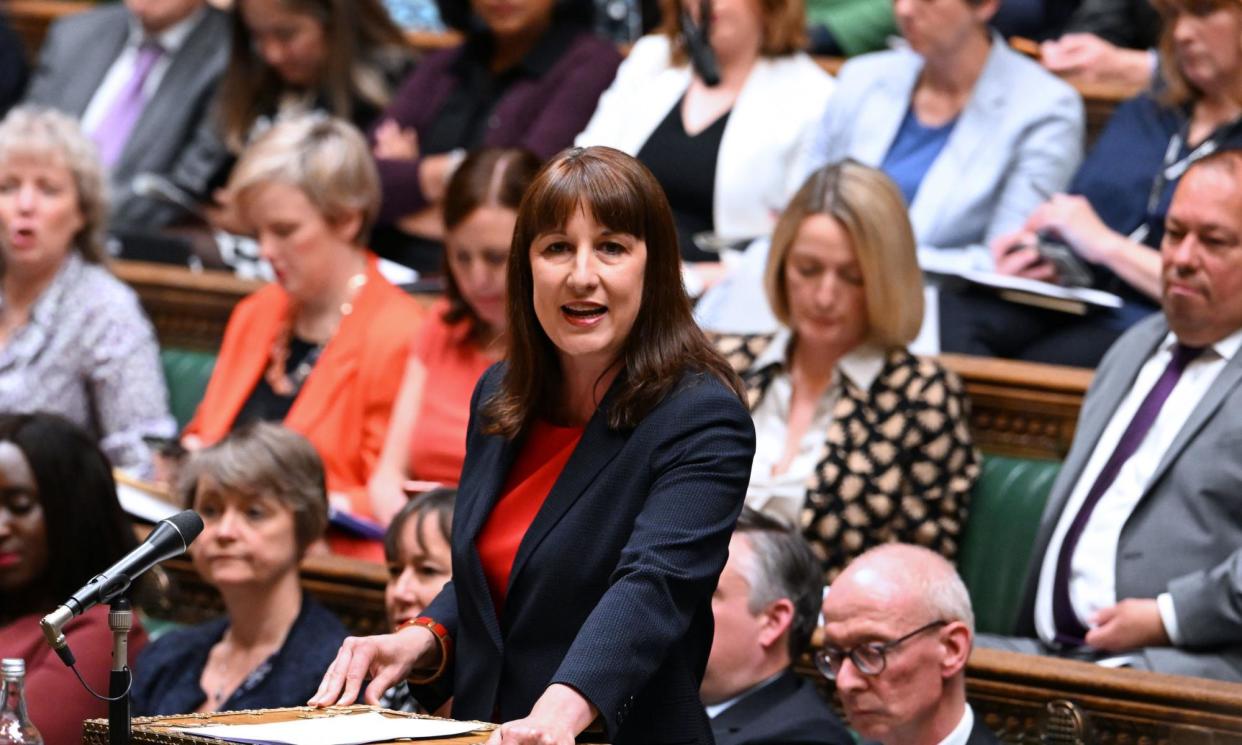How realistic is Labour’s aspiration to cut tax gap by £5bn?

Each year His Majesty’s Revenue and Customs know how much tax they would collect if all individuals and companies paid what they owed. They also know how much they have actually collected. The difference between the two figures is known as the tax gap.
In the last year for which data is available, 2021-22, the tax gap stood at £35.8bn, up £5bn on the previous year. The amount of tax owing also rose, from £642bn to £739bn, so in percentage terms the tax gap remained unchanged at 4.8%.
That figure has fallen over the past two decades. When Tony Blair was prime minister in 2005 it stood at 7.5%, and it was 7% in 2013 when David Cameron was prime minister.
The shadow chancellor, Rachel Reeves, is promising a crackdown on the minority of tax dodgers who fail to pay what they owe. On Monday she announced plans to cut the tax gap by £5bn by the end of the next parliament, which Labour says it can achieve by investing £555m so HMRC can employ more staff and modernise its systems. But how realistic is that aspiration?
A breakdown of HMRC’s figures suggests that more than half of the tax gap – 56% – is accounted for by small businesses and the self-employed. Criminals, large businesses and medium-sized businesses each account for 11%, wealthy individuals account for just 5% and all other individuals the remaining 6%.
The accountant and tax expert Richard Murphy says: “Reeves could raise billions by closing the tax gap, but not by looking offshore to find it. The tax gap is in the cities, towns and villages of the UK where small businesses aren’t paying large amounts of what they owe.
“If she wants to collect that money – and support honest business by doing so – then she needs to reopen the UK’s local tax offices and put VAT inspectors back on the road, checking that business really pay. Nothing else can work.”
Murphy believes HMRC is under-estimating the size of the tax gap, which he says could be as high as £90bn. He thinks Labour should establish an independent office for tax responsibility to monitor delivery and ensure HMRC doesn’t “mark its own homework”.
The FDA union, which represents senior civil servants, supports Labour’s plan, pointing to the success of previous investment in boosting compliance. The fall in the tax gap to under 5% was the result of HMRC’s efforts to recover unpaid tax through direct interventions with customers, it says.
“This huge improvement coincided with large investments for HMRC up until the spring budget 2015. Post-2015, investments in HMRC have been significantly smaller. However, this focus on compliance investment has been accompanied by chronic underinvestment in the HMRC systems that help underpin voluntary compliance, the ease of filing a tax and the ability to quickly and easily resolve any queries.”
But Nimesh Shah, chief executive of the tax and advisory firm Blick Rothenberg, says: “Labour’s claims of a tenfold return on investment in additional tax revenue seem incredibly ambitious at a time when HMRC are struggling to answer the phones.”
Over the past three years, the government has announced extra money for HMRC to support compliance efforts, tackle the more serious cases of fraud and manage tax debts, Shah says.
“The Labour party have said they will bolster HMRC compliance officers by 5,000, invest in digitisation and work with businesses and the tax profession to modernise HMRC, including greater use of AI,” he adds.
“This all sounds very sensible, but HMRC’s customer service and standards are at an all-time low, with regular stories of shutting down phone lines and taxpayers not being able to access the right information. There is significant work to do for HMRC before we can start thinking about raising £5bn additional tax revenue.”


